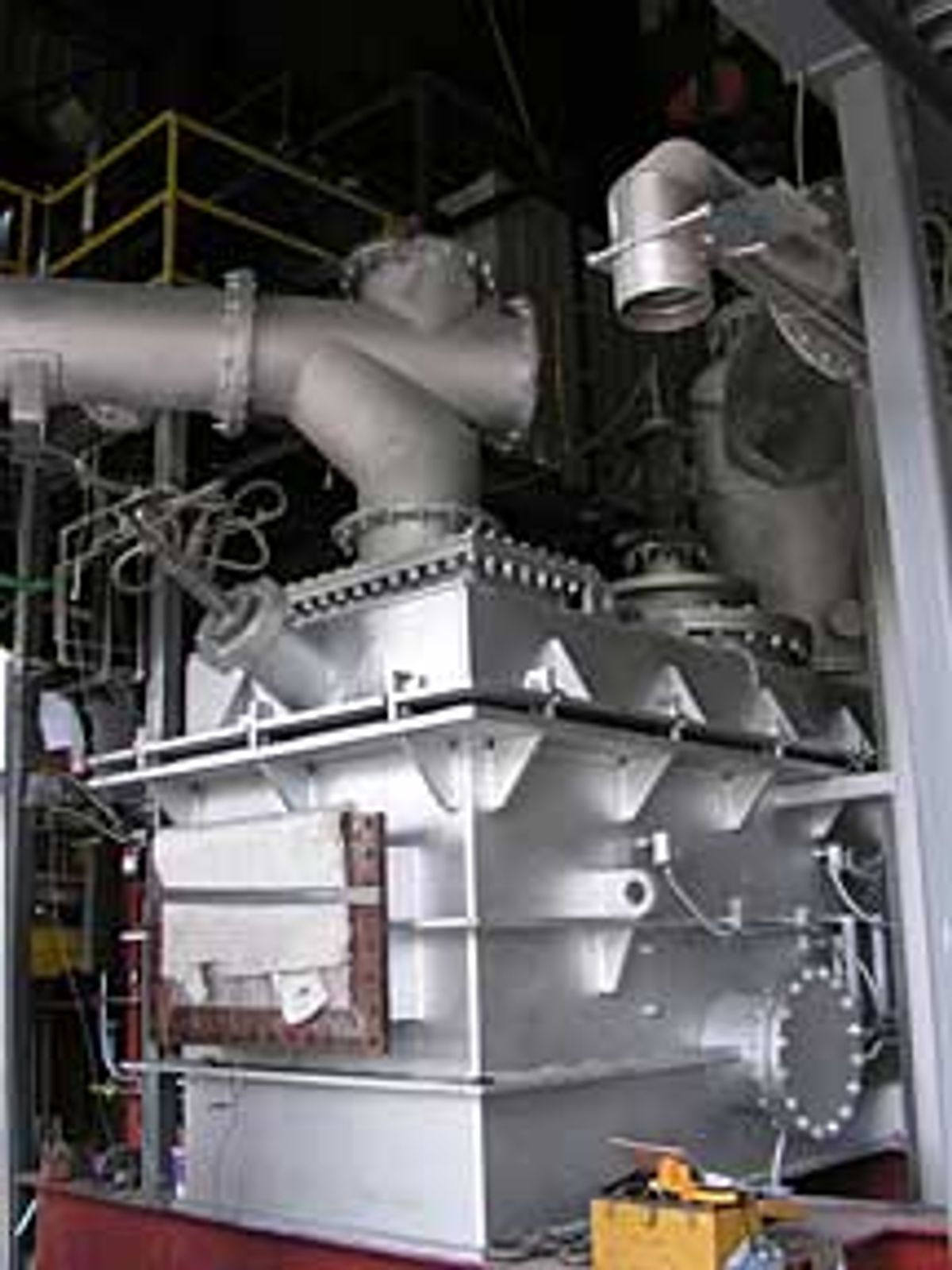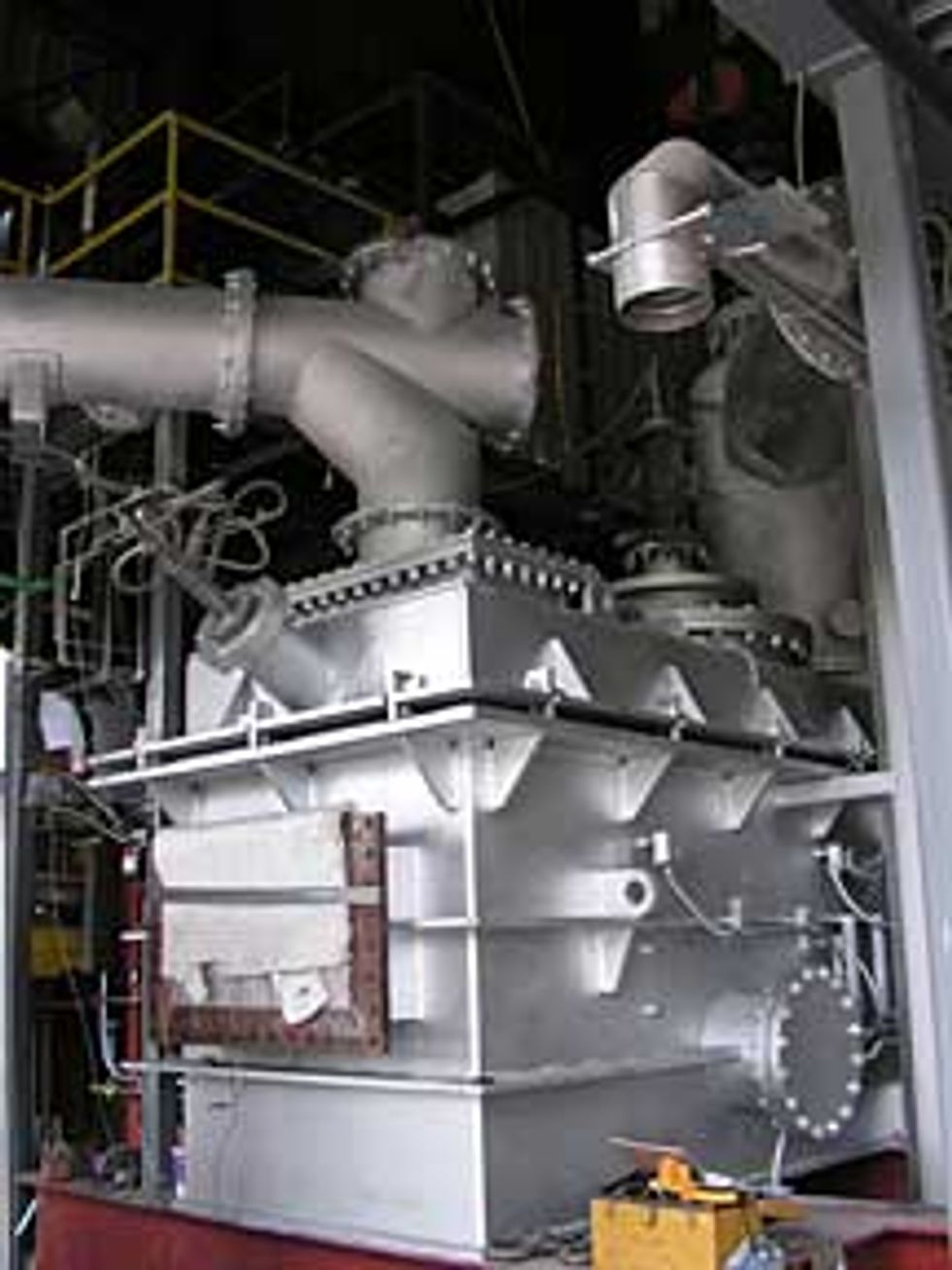10 May 2010—Ze-gen, a start-up that has developed a process to turn waste into an energy-rich synthesis gas, says it plans to build a 7-megawatt commercial power plant in Attleboro, Mass. This small plant, which the company expects to complete in late 2011, would be the first commercial waste gasification plant in the United States.
The plant uses a relatively new process that turns waste into a hot, combustible gas by drowning it in a bath of molten copper. The resulting 7 MW will power an industrial park occupied by a community college and various businesses, including a wastewater treatment plant. The tenants, who currently pay waste-collection services to take their trash, will pay a lower rate to send some of their refuse to Ze-gen. The company will use the waste—about 137 metric tons per day—to generate electricity and steam for heat, which Ze-gen will then sell back to the tenants. The park’s electricity load ranges from 3 to 10 MW, so for much of the day, it will be independent of the grid, and the company can sell the park’s excess electricity to the local utility. During peak hours, the grid will supply the shortfall.
It sounds like an infallible plan—the company gets paid first to collect its feedstock, then gets paid again for transforming the feedstock into electricity and heat. The industrial park’s managers, who hope to attract more tenants, can market the place as ”green,” but Ze-gen expects to produce only a nominal profit over a 15-year period.
”In a sense, we’re condemning ourselves to bad economics by building a small plant,” says Bill Davis, Ze-gen’s CEO. ”We’re trading off project economics for what we think is a more sensible amount of risk.” Ze-gen, which has collected US $33 million in start-up funding to date, is financing construction of the plant itself, and it has yet to line up power-purchase agreements with the utility, Davis says.
The reason for Ze-gen’s conservative approach is that waste gasification—in spite of a handful of pilot plants around the world and a few commercial facilities in Japan—is still considered a risky investment. The technology ”has been a dream for many, many years,” says Robert Brown, an engineering professor at Iowa State University, in Ames. ”The question is whether it can make money.”
Waste-to-energy itself is not a new concept, of course, but only straightforward incineration has caught on. In the United States, municipal solid waste accounts for 2218 megawatts’ worth of capacity in the summer, according to 2007 data from the Energy Information Administration, which counts waste as renewable energy.
Gasification promises to be cleaner than waste combustion and potentially more energy efficient, but no company has yet proven that to be true. In Ze-gen’s gasifier, the garbage swirls around in 1300 °C molten copper while a jet releases a high-pressure air stream. Instead of just burning, the waste breaks down into carbon monoxide and hydrogen gas, which collects above the liquid. The very hot gas mix, called syngas, is then siphoned off and burned in a boiler, creating steam that drives a turbine to generate electricity.
”Making syngas to put into a boiler is not our ultimate goal,” says Davis. What the company really hopes, he says, is to market the syngas as a fuel with flexible properties. ”Syngas is a great thing, because it’s a building block,” he says. For example, the heat from the syngas could be used to make steam, while the gas itself could be used to run an internal combustion engine. Another possibility is to turn the syngas into liquid fuel. In February, a Washington, D.C.–based biofuel company called Solena said it will build a gasification plant in Britain to turn waste into jet fuel for British Airways.
These projects will have a lot to prove, though, before waste gasification truly catches on. ”I’ve seen a lot of proposals come up over the years, and none get built,” says Ted Michaels, the president of the Energy Recovery Council, a waste-to-energy trade group.
Two major obstacles have blocked waste gasification’s path to date: First, trash comes in all shapes, sizes, and materials, so some amount of sorting and chopping needs to be done before it can be used. Part of that task is handled by the use of the molten metal bath, says Davis. Submersing the feedstock in the hot liquid distributes the heat around the odd-size objects to speed up the production of syngas. Even so, ”there’s a lot of waste out there, and not all of it will work.” Davis argues that by being cheaper than a landfill, Ze-gen can be selective about the garbage it accepts.
The second hurdle is the quality of the resulting gas. Because of the mixture of materials going into the gasifier, a whole mess of arbitrary particulates and tar may also end up in the gas. The quality of the gas matters less when used in a boiler, but the particles would clog turbines, for example. Cleaning up the gas would cut into the efficiency of the whole operation. Davis says that the energy available in Ze-gen’s syngas is 80 percent of the energy available from the waste material, with room to spare for purifying it.
A third challenge is simply public perception. ”If there’s anything worse than nuclear energy, it’s putting waste-to-energy in someone’s backyard,” says Brown. Ze-gen seems to have surmounted that obstacle in part by taking its neighbors’ trash at a discount. The outcome of the company’s experiment in Massachusetts will show whether it can overcome the rest.

